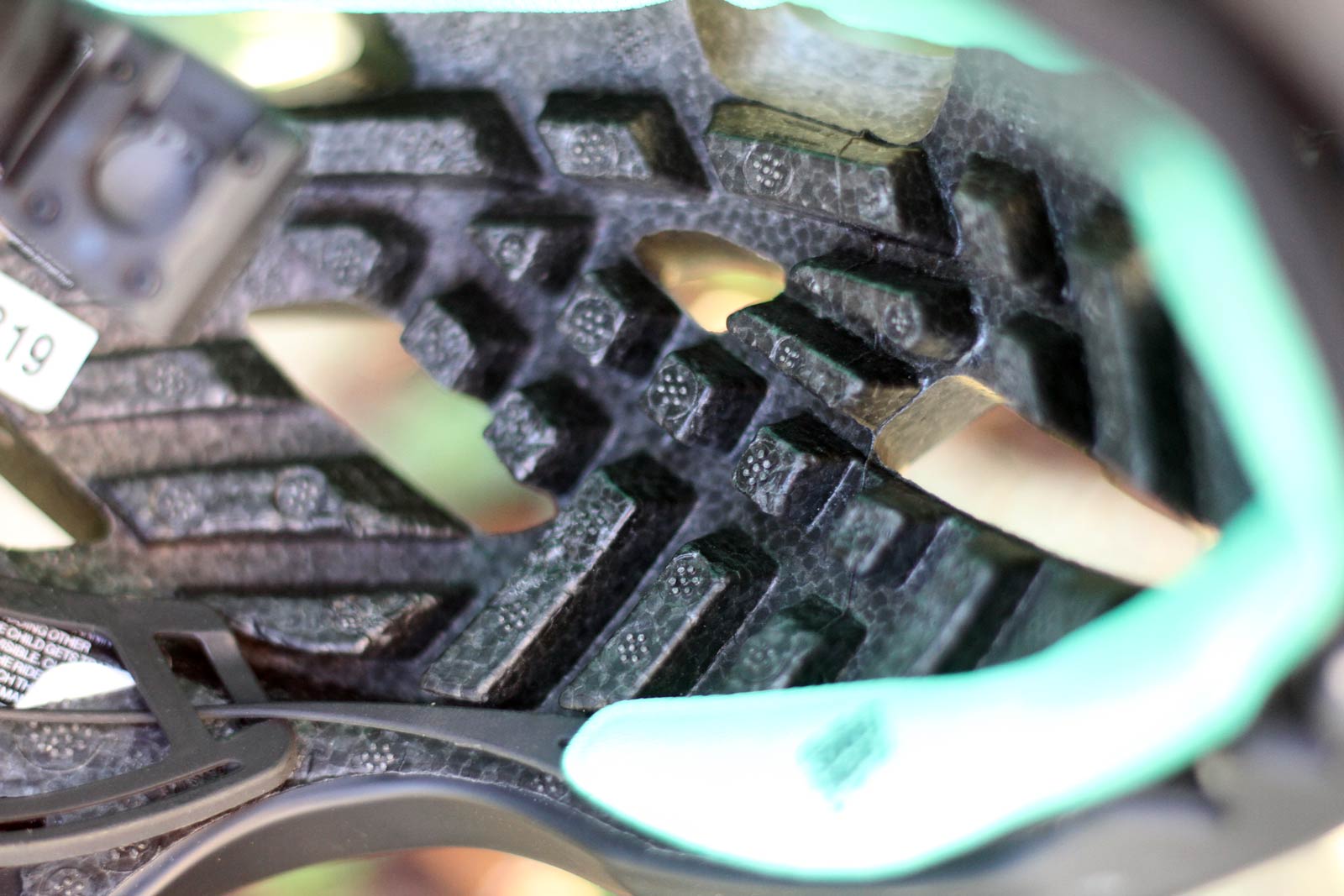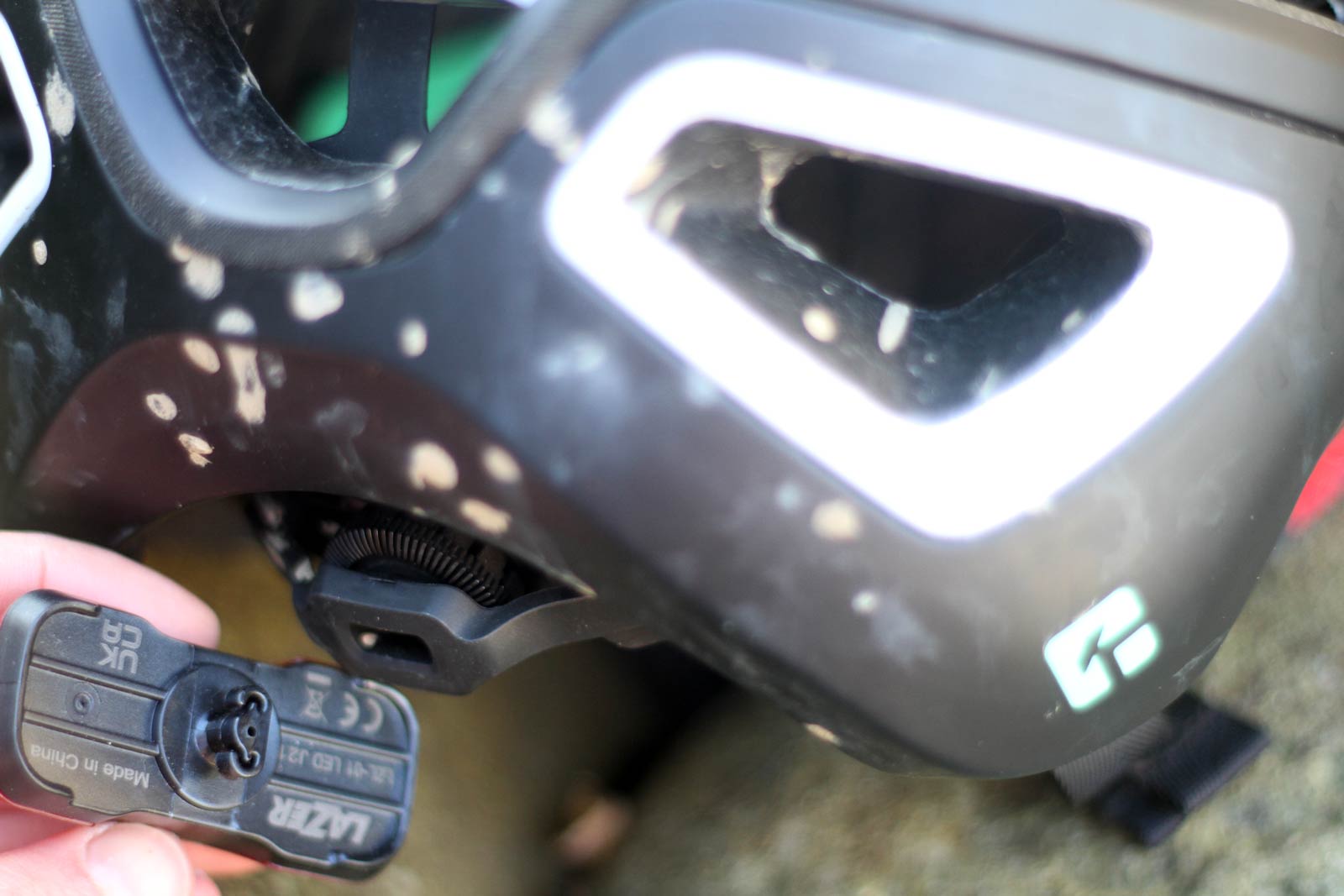Editor’s Note: The original review described a flaw with the vertical adjustment of the retention system. This problem has now been resolved by Lazer, with a running update on all Lazer Jackal KinetiCore helmets produced as of May 2022.
We were lucky enough to be invited over to the Winter Bike Connection Event in Massa Marittima, Tuscany to check out the latest products and technology from a handful of exciting European companies, and to actually ride some of it on the beautiful, well-maintained singletrack of the Trail Brothers’ trail network. We have a number of first ride reviews from this event coming your way; this one on the Lazer Jackal KinetiCore mountain bike helmet is the first.
Lazer is looking to make waves in the world of bike helmet safety with KinetiCore, their take on an integrated approach to rotational impact protection. The concept takes a less-is-more approach, actually removing EPS material from strategic locations throughout the helmet body leaving behind variable shape blocks that function as “controlled crumple zones” in the event of an impact. We have covered how exactly the technology works elsewhere.
Here, we turn our attention to one of six new helmets benefiting from these controlled crumple zones; the Lazer Jackal KinetiCore MTB Helmet. Though we certainly appreciate the benefits of the KinetiCore technology itself, our overall experience with this helmet has been a bit of a mixed bag. Read on to find out why.
Review: Lazer Jackal KinetiCore
Before going into the fit and comfort of the Lazer Jackal KinetiCore, I’ll quickly skip to the final, possibly most important feature of this helmet that I investigated; the controlled crumple zones made of variable size and shape blocks of EPS. I wanted to know how the EPS crushed down under force without actually crashing in the helmet.
Pushing down on four of the blocks, I was able to crush them very easily by hand. They do actually crush down laterally, as well as vertically. They only completely sheered off when I applied a bigger force with my thumb.

It seems the technology does work exactly as it is intended, with Virginia Tech awarding the Lazer Jackal KinetiCore helmet a 5-Star Rating. What’s also cool about these controlled crumple zones is that it’s super easy to get a quick visual of just how big an impact you took to the head during a crash, as you should be able to see where the EPS blocks have crushed down or sheered off by removing the one-piece comfort liner (harder to lose in the wash than multiple component comfort liners).
My head measures up at somewhere between 52cm and 55cm, depending on where I measure. Thus, I opted for the small helmet that caters to head circumferences of 52-56cm. I would say I was satisfied with the fit, but not entirely delighted with it.
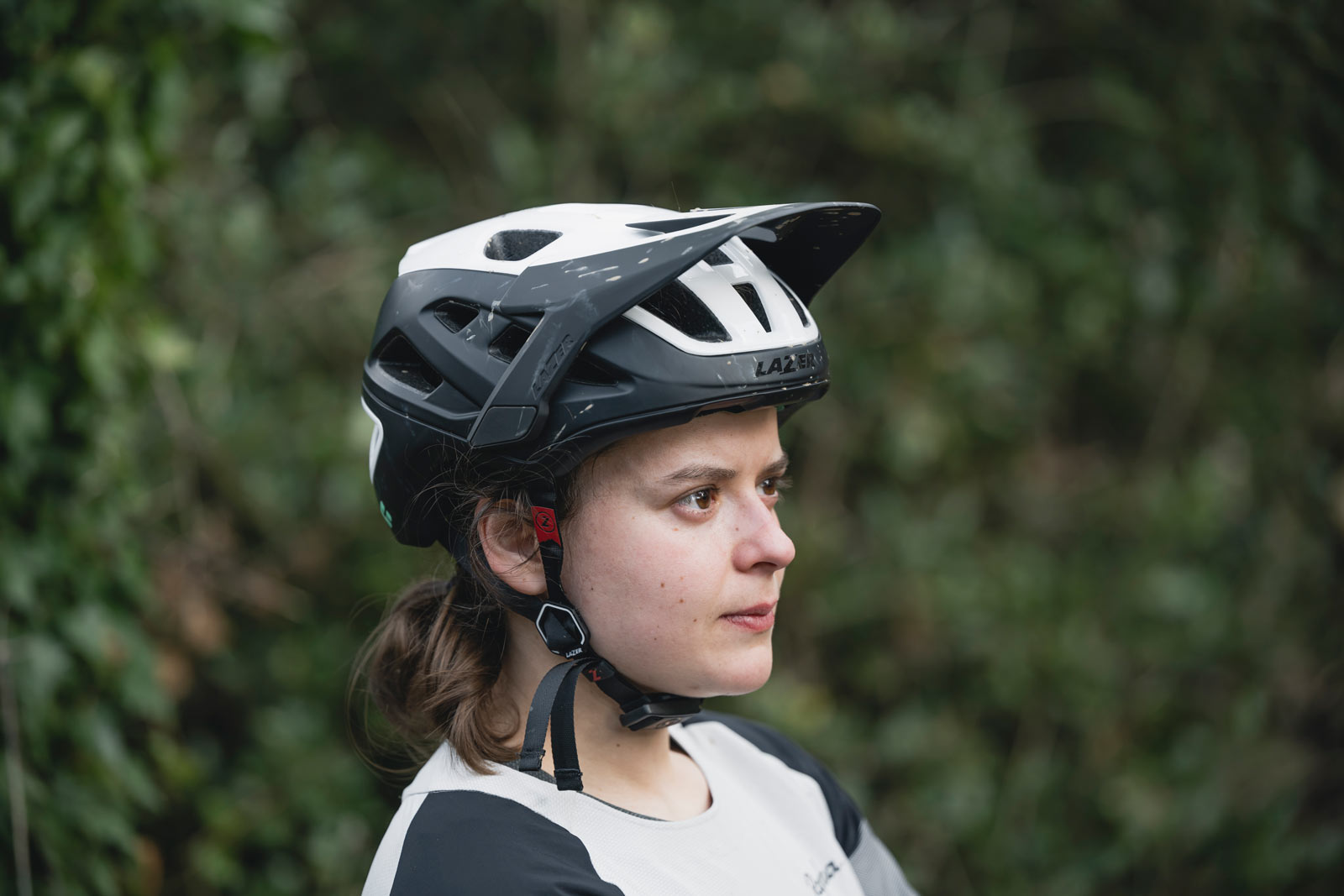
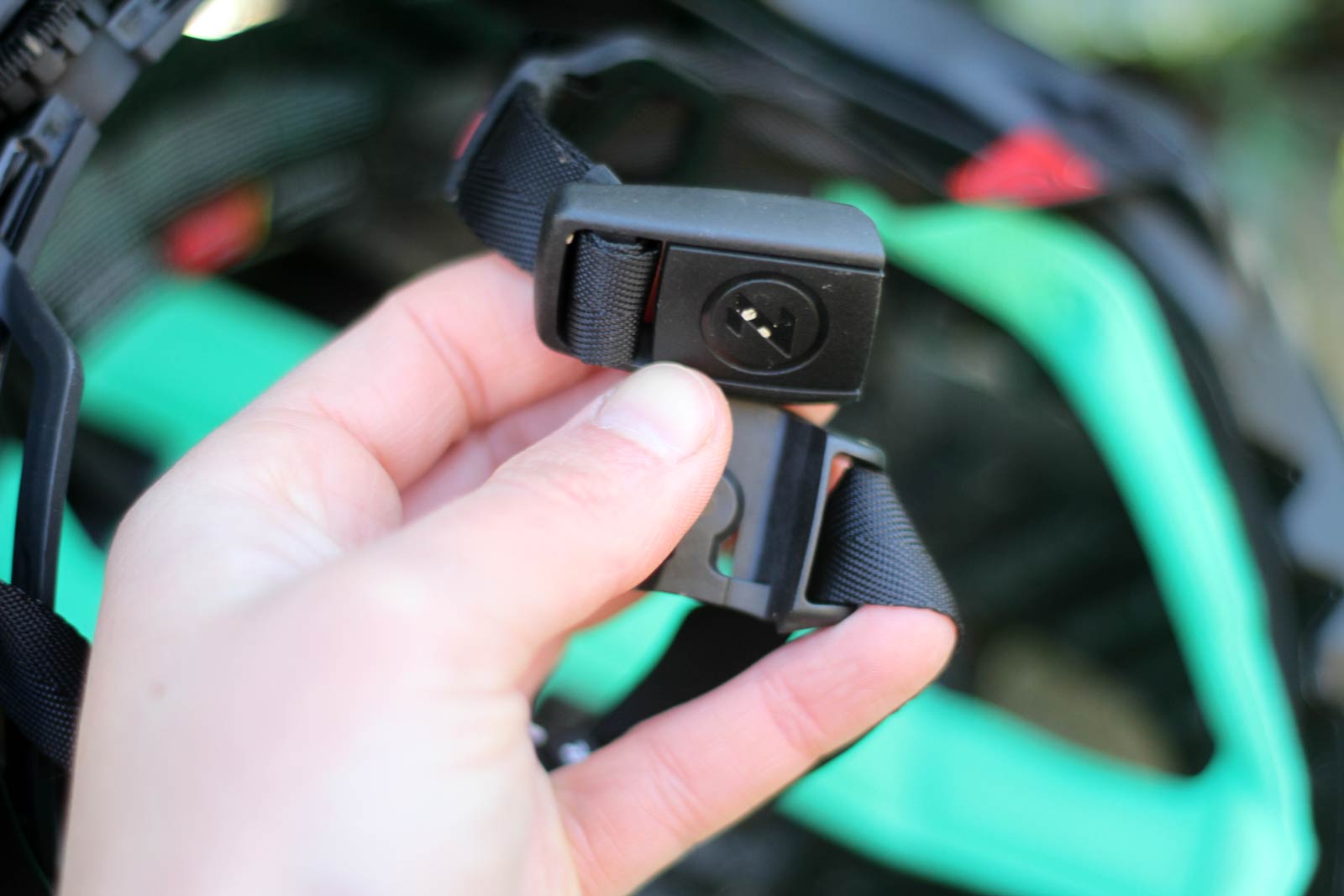
For me, the most secure fit was found with the retention system set at its lowest position, with the cradle in its most extended position. Here, it cups the occipital portion of my skull securely while allowing the front of the helmet to sit quite low on my forehead. Tightening the retention system I did notice undue pressure points from the sides of the head belt, just behind my ears. I can alleviate that by running the retention system closer to the middle of its height adjustment range, but at the expense of less coverage at the forehead.
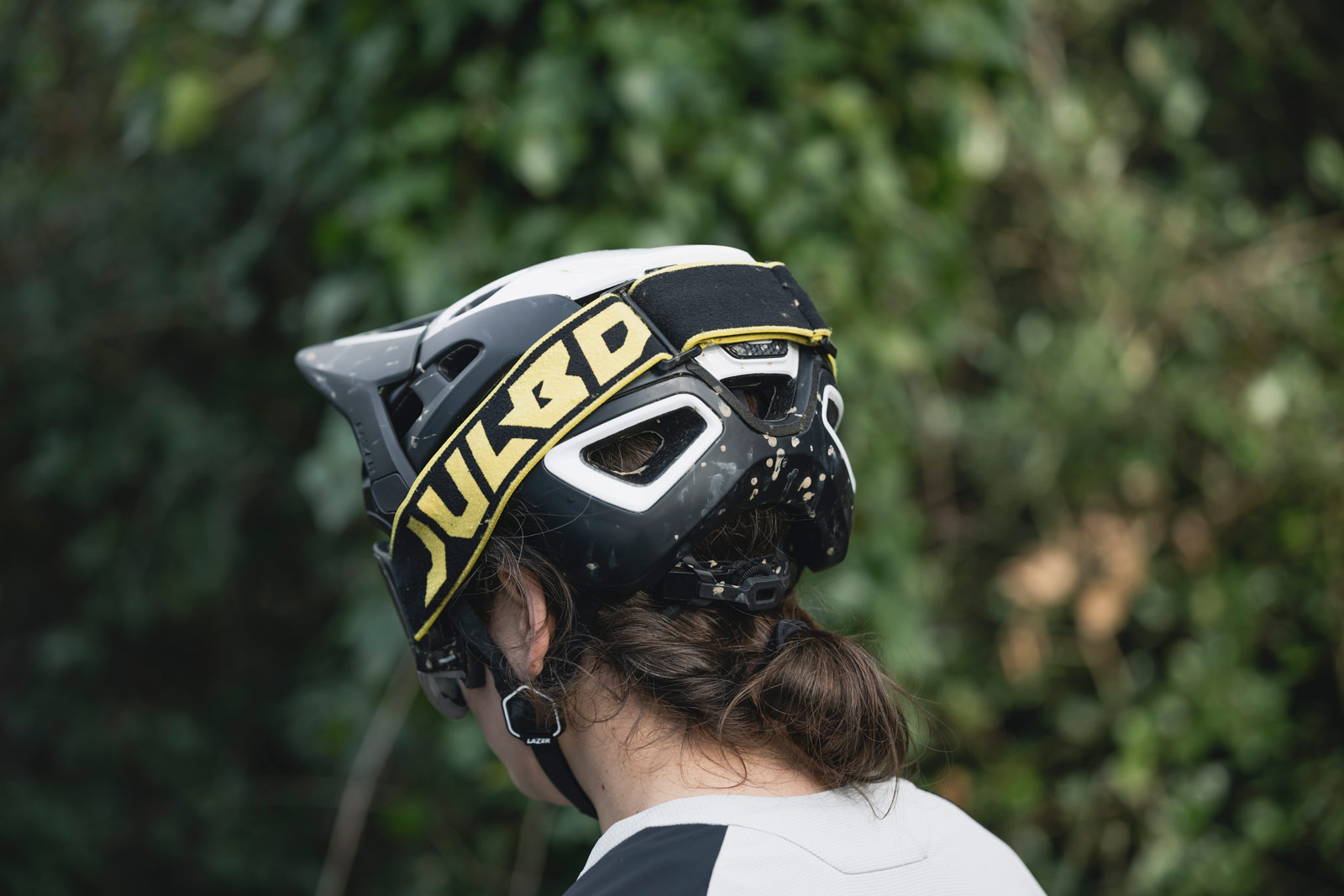
The Jackal worked nicely with the Julbo Quickshift goggles. The strap sat securely around the back of lid, held in place by a rough V-shaped surface. There are actually two places you could position a goggle strap. Lower down the rear of the helmet is a U-shaped strip of rough fabric that also grips the goggle strap well, preventing it from slipping up or down while riding. With the peak in the high position there was plenty of room to sit the goggles underneath.
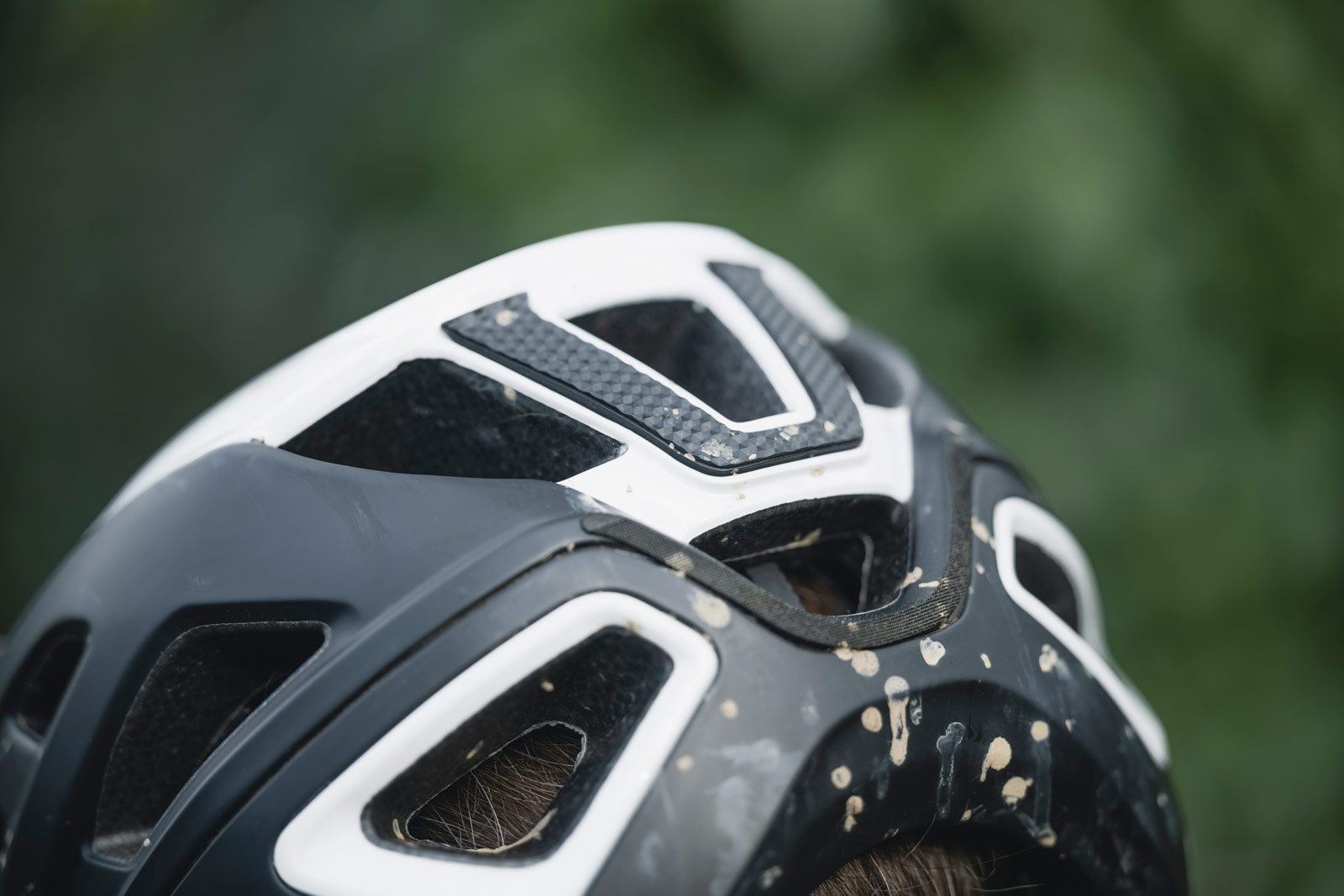
The problem I encountered while riding (now resolved by Lazer)
On the Lazer Jackal KinetiCore helmet, the vertical positioning of the retention system is adjusted using a ratcheting mechanism. It is here that I identified a notable flaw (at least with my sample helmet). I found that very little force was required to push the height adjustment through its range of positions, to the point where the helmet actually moved through those positions during riding.

On particularly fast, rough trails, and even on much slower technical trails littered with small drops, I was able to hear the height adjustment mechanism of the retention system slip through its positions. This caused the helmet body to rotate back off my forehead leaving it a little too exposed for my liking.
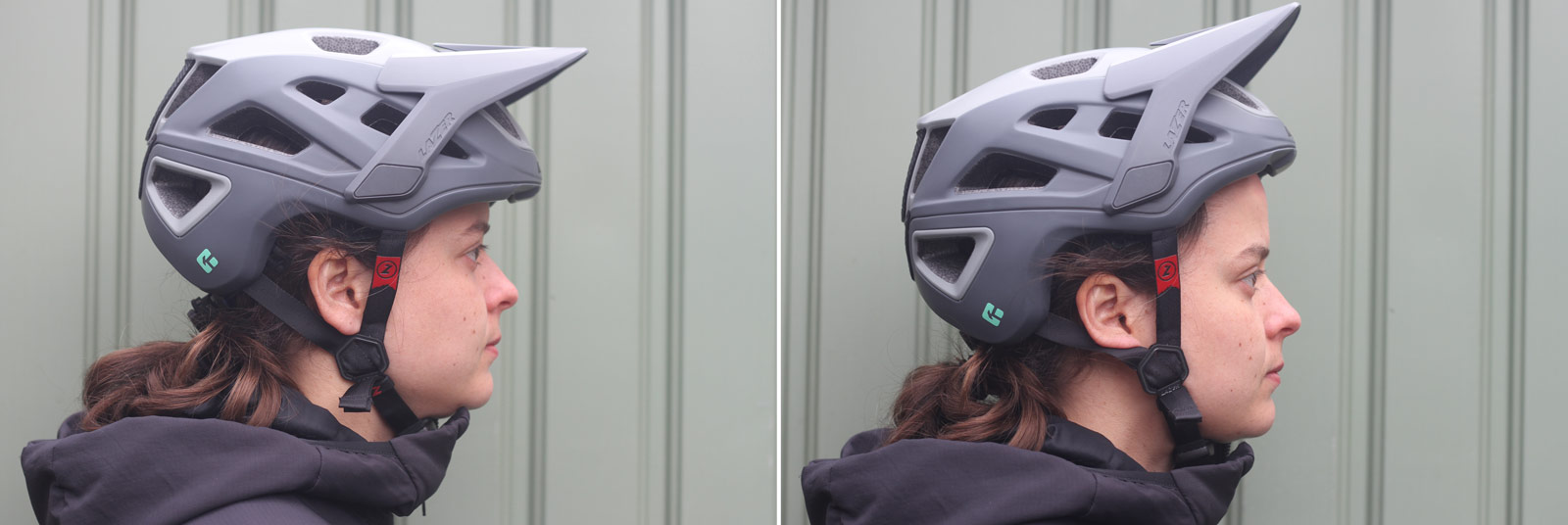
We raised the issue with Lazer, sending our original test helmet back for assessment. I recently caught up with them at Eurobike where they informed me they have implemented a running update to the Jackal KinetiCore. As of May 22′, all Jackal KinetiCore helmets have a more robust ratchet in the back that requires more force to vertically adjust the rear basket. While I haven’t tested the new ratchet system, I did get to handle the two versions at Eurobike, and can confirm that the new ratchet system does indeed require significantly more force to be pushed through its positions.
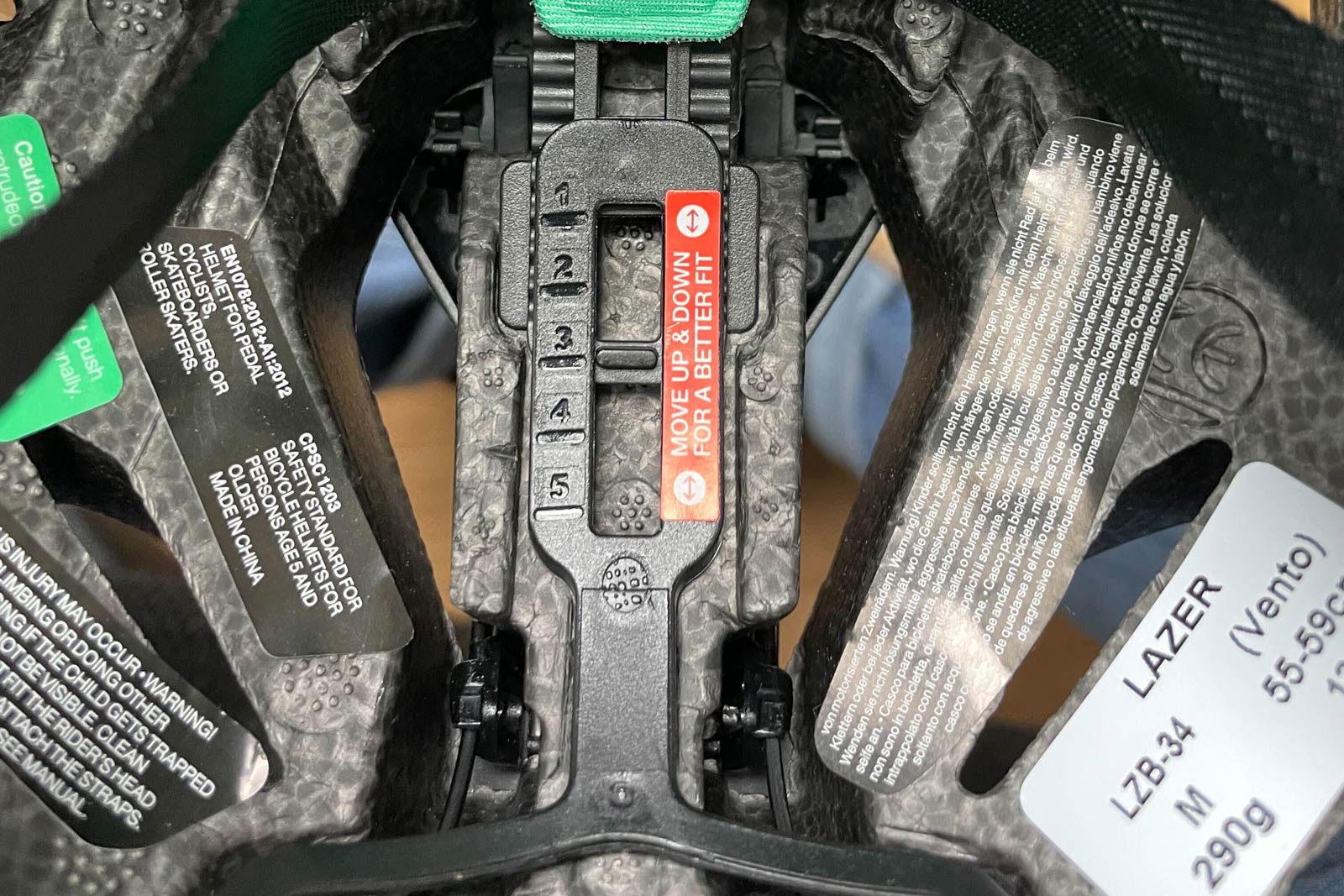
It’s important to note here that the vertical adjustment mechanism of the Jackal KinetiCore is not shared by the other helmets across the new KinetiCore range. Zach’s Lazer Vento KinetiCore Aero Road helmet appears to have a different, more robust adjustment system.
Rear Light and GoPro Mount
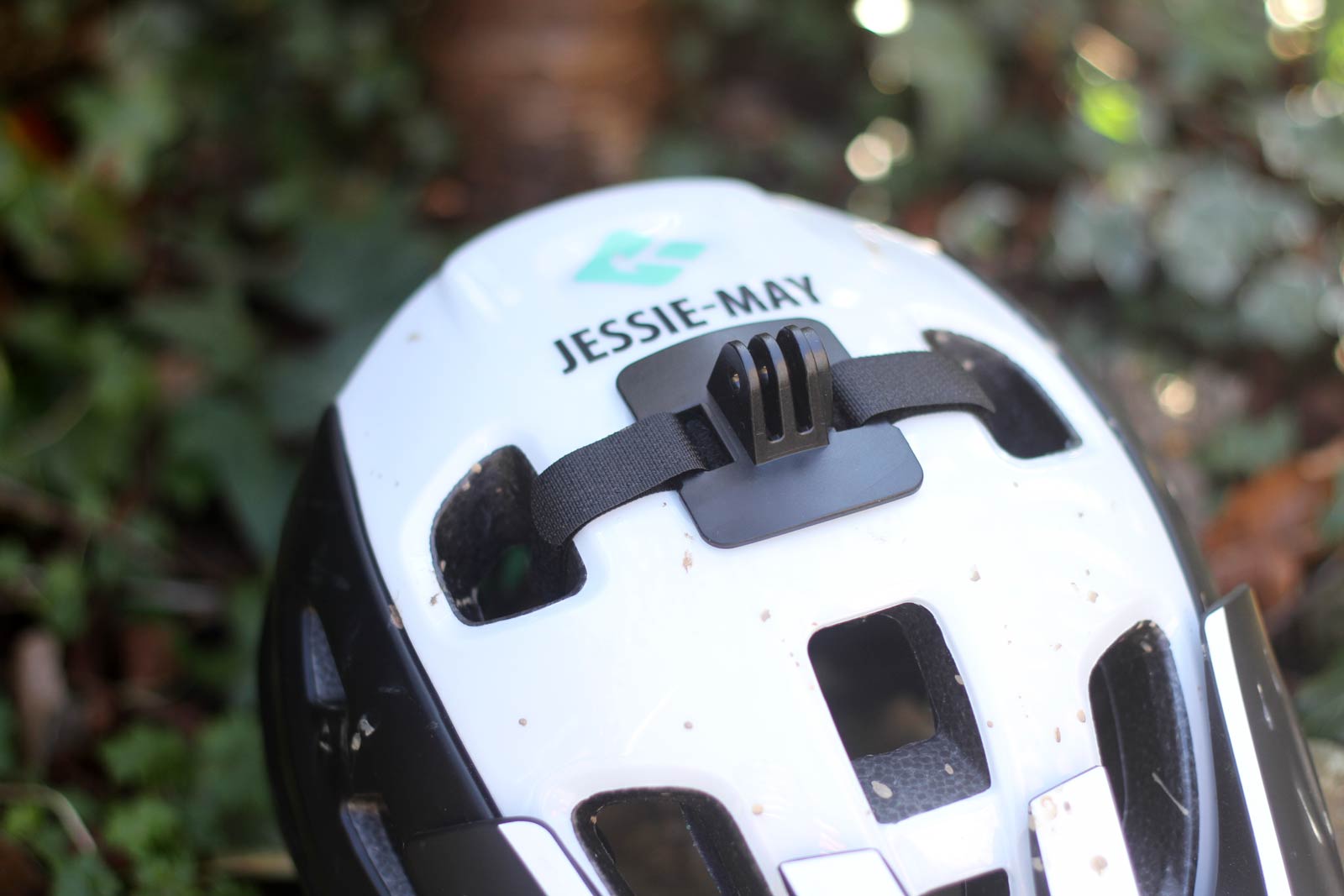
The Lazer Jackal KinetiCore mountain bike helmet is shipped with an action camera mount that attaches to the top of the helmet via a velcro strap. The mount lacks a metal threaded nut to accept the threads of the pin, so you’ll need to source an additional nut to secure the camera in place. I didn’t test that feature as I felt the weight of a GoPro atop the helmet would only exacerbate the issue with the retention system (the issue that Lazer has now resolved).
Five of the six new KinetiCore helmets, including the Vento and Strada road helmets, feature a mount for Lazer’s new Universal LED. On the Jackal, the light attaches to the helmet via the retention system dial. You simply push it in and twist it 90° clockwise to secure.
The light comprises a set of 4 LEDs with a light sensor and a motion sensor. There are no fewer than five modes to choose from, the most powerful of which (Boost) produces a solid 40 Lumen light. “Safe” is a pulsing 5 Lumen light, “Pulse” is a pulsing 20 Lumen light, “Move” is a 40 Lumen flashing light activated when movement is detected during day or night, and “Night” is a 20 Lumen pulsing light activated when the LED is in motion at night.
The Universal LED is USB rechargeable, said to be fully recharged after just 1 hour. It is sold separately, RRP to be confirmed.
Jackal KinetiCore Pros
- Very well ventilated
- Well-padded one-piece comfort liner
- Lightweight
- Good coverage for an open-face helmet
- Removable rear light
Jackal KinetiCore Cons
- Head belt pressure points
Pricing & Availability
The Lazer Jackal KinetiCore mountain bike helmet is available now in sizes S-XL, certified to CE-CPSC and AS safety standards. It retails at $219.99 USD and is available in no fewer than eight colorways.
